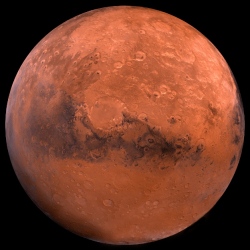
NASA’s Mars Atmosphere and Volatile Evolution (MAVEN) spacecraft is taking its first look at the Martian atmosphere. Part of the orbiter’s commissioning phase, it limbered up its sensors by observing the effect of a solar event and returned its first images of the fountain-like coronas that are peeling away the planet’s atmosphere.
Launched in November of last year from Cape Canaveral, Florida, MAVEN arrived at Mars on September 21 and has since moved to a lower orbit. Its first observations included taking ultraviolet images of the tenuous oxygen, hydrogen, and carbon coronas in the upper atmosphere, and creating a comprehensive map of its ozone layers. During this process, NASA scientists say that the instruments are working better than expected.
MAVEN’s main mission is to study the effect of the Sun on the Martian atmosphere and has hit the ground running. On September 26, a flare erupted from the Sun, arriving at Mars on the 29th, where it was observed by MAVEN’s Solar Energetic Particle instrument. These events occur at regular intervals and scientists believe that they are a major reason why the Martian atmosphere is so tenuous. Energetic solar particles are powerful enough to strip away air molecules. Earth’s magnetic field protects us from this, but the Martian magnetic field is extremely weak and spotty.
